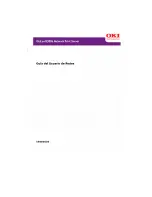
• Ensure that there is adequate space around the server to allow for accessing the server and for adequate
airflow. The airflow in this server is from front to back.
• Ensure that the air-conditioning meets the thermal requirements listed in the
• Ensure that the cabinet or rack meets the requirements listed in the
• Ensure that the site power meets the power requirements listed in the
Power Specifications, on page 86
.
If available, you can use an uninterruptible power supply (UPS) to protect against power failures.
Rack Requirements
The rack must be of the following type:
• A standard 19-in. (48.3-cm) wide, four-post EIA rack, with mounting posts that conform to English
universal hole spacing, per section 1 of ANSI/EIA-310-D-1992.
• The rack-post holes can be square 0.38-inch (9.6 mm), round 0.28-inch (7.1 mm), #12-24 UNC, or #10-32
UNC when you use the Cisco-supplied slide rails.
• The minimum vertical rack space per server must be one rack unit (RU), equal to 1.75 in. (44.45 mm).
Supported Cisco Slide Rail Kits
The server supports the following rail kit:
• Cisco part UCSC-RAILB-M4= (ball-bearing slide rail kit)
Rack Installation Tools Required
The slide rails sold by Cisco Systems for this server do not require tools for installation.
Slide Rail and Cable Management Arm Dimensions
The slide rails for this server have an adjustment range of 24 to 36 inches (610 to 914 mm).
The optional cable management arm (CMA) adds additional length requirements:
• The additional distance from the rear of the server to the rear of the CMA is 5.4 inches (137.4 mm).
• The total length of the server including the CMA is 35.2 inches (894 mm).
Cisco Application Services Engine Hardware Installation Guide
11
Installing the Server
Rack Requirements
















































